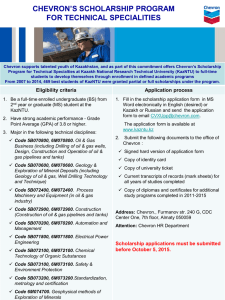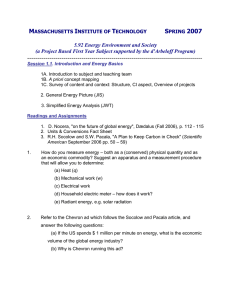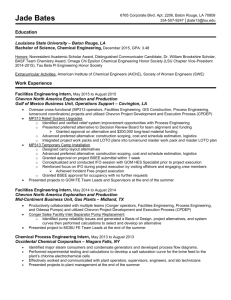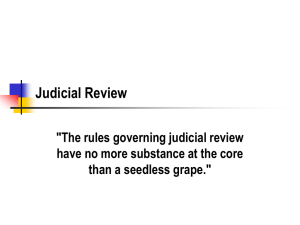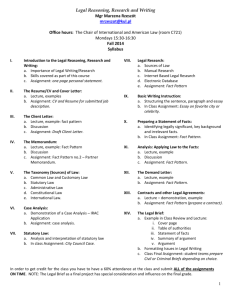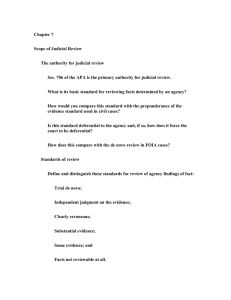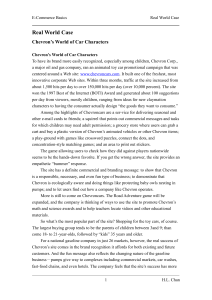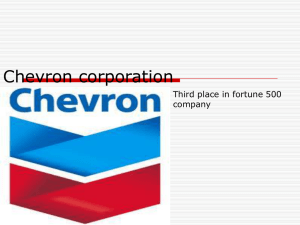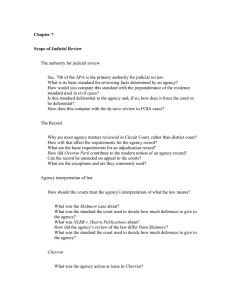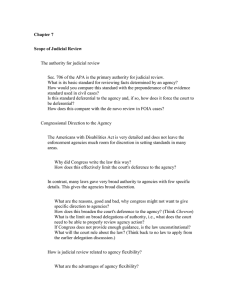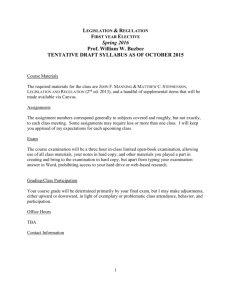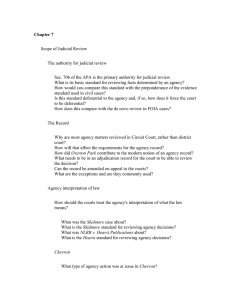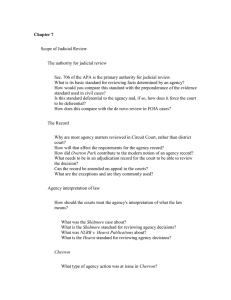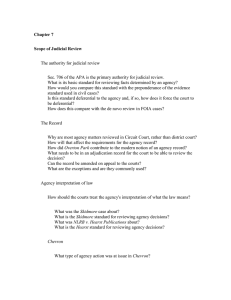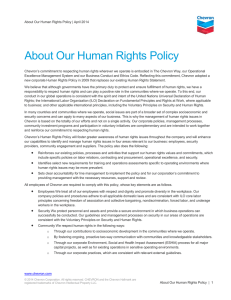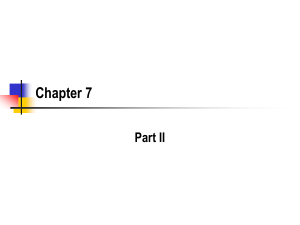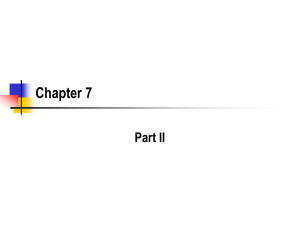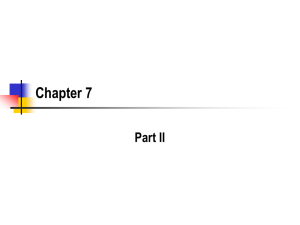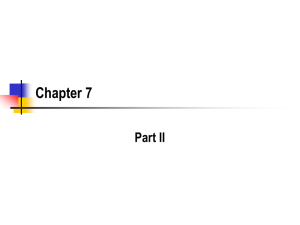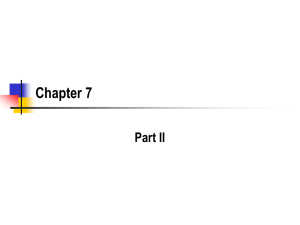Sample Final Exam Essay Question – Answer Key
advertisement
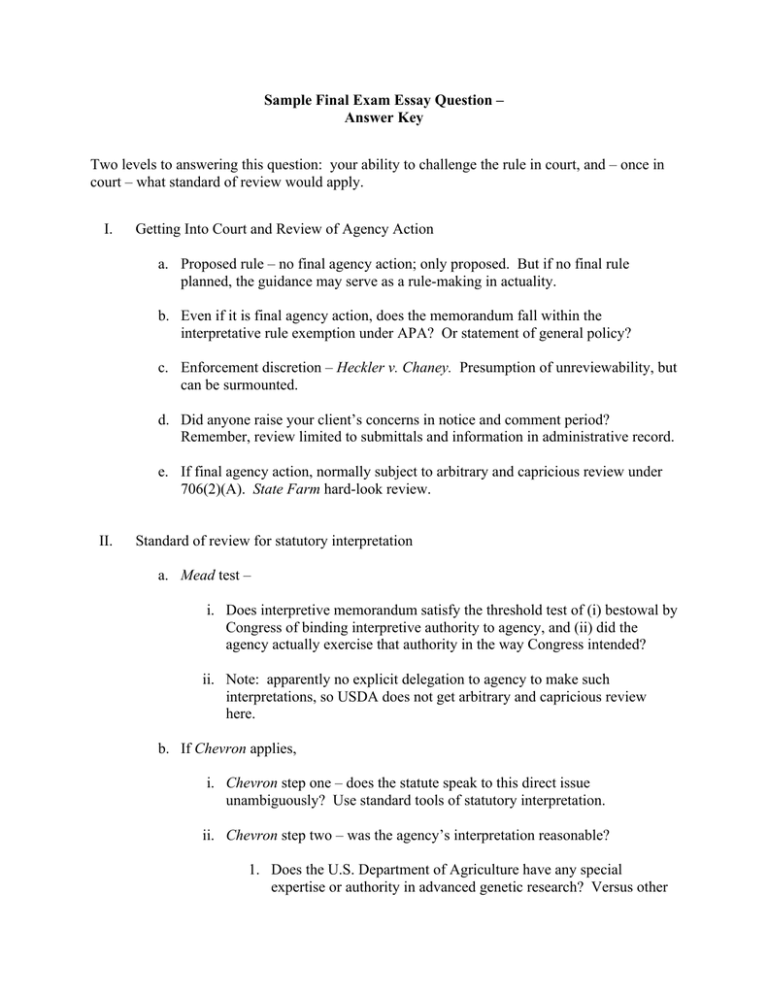
Sample Final Exam Essay Question – Answer Key Two levels to answering this question: your ability to challenge the rule in court, and – once in court – what standard of review would apply. I. Getting Into Court and Review of Agency Action a. Proposed rule – no final agency action; only proposed. But if no final rule planned, the guidance may serve as a rule-making in actuality. b. Even if it is final agency action, does the memorandum fall within the interpretative rule exemption under APA? Or statement of general policy? c. Enforcement discretion – Heckler v. Chaney. Presumption of unreviewability, but can be surmounted. d. Did anyone raise your client’s concerns in notice and comment period? Remember, review limited to submittals and information in administrative record. e. If final agency action, normally subject to arbitrary and capricious review under 706(2)(A). State Farm hard-look review. II. Standard of review for statutory interpretation a. Mead test – i. Does interpretive memorandum satisfy the threshold test of (i) bestowal by Congress of binding interpretive authority to agency, and (ii) did the agency actually exercise that authority in the way Congress intended? ii. Note: apparently no explicit delegation to agency to make such interpretations, so USDA does not get arbitrary and capricious review here. b. If Chevron applies, i. Chevron step one – does the statute speak to this direct issue unambiguously? Use standard tools of statutory interpretation. ii. Chevron step two – was the agency’s interpretation reasonable? 1. Does the U.S. Department of Agriculture have any special expertise or authority in advanced genetic research? Versus other agencies that also administer the statute? 2. “Reasonable” is extremely generous and deferential to agency; our client will need to make substantial and powerful comments on guidance to build administrative record that would support an attack. c. Possible exceptions to Chevron i. Important Question Doctrine (“elephants in mouseholes”) – Congress wouldn’t delegate fundamental questions on resurrection of entire species to an agency through statutory silence or ambiguity. ii. Other judicial push-back doctrines to Chevron – interpretations on scope of preemption of state law; can Chevron bind courts to agency interpretations of the U.S. Constitution’s application to regulations? d. If Chevron doesn’t apply, look to Skilling factors (consistency, thoroughness, reasoning – “power to persuade”). e. Auer deference – to extent that memorandum interprets the agency’s own regulations. But note the Auer deference has come under severe criticism by several Justices. f. Overall agency action (outside of statutory interpretation) – arbitrary and capricious under APA 706(2)(A)? III. Remedy – remand for either withdrawal of guidance memorandum or re-publication as a notice-and-comment rulemaking.
